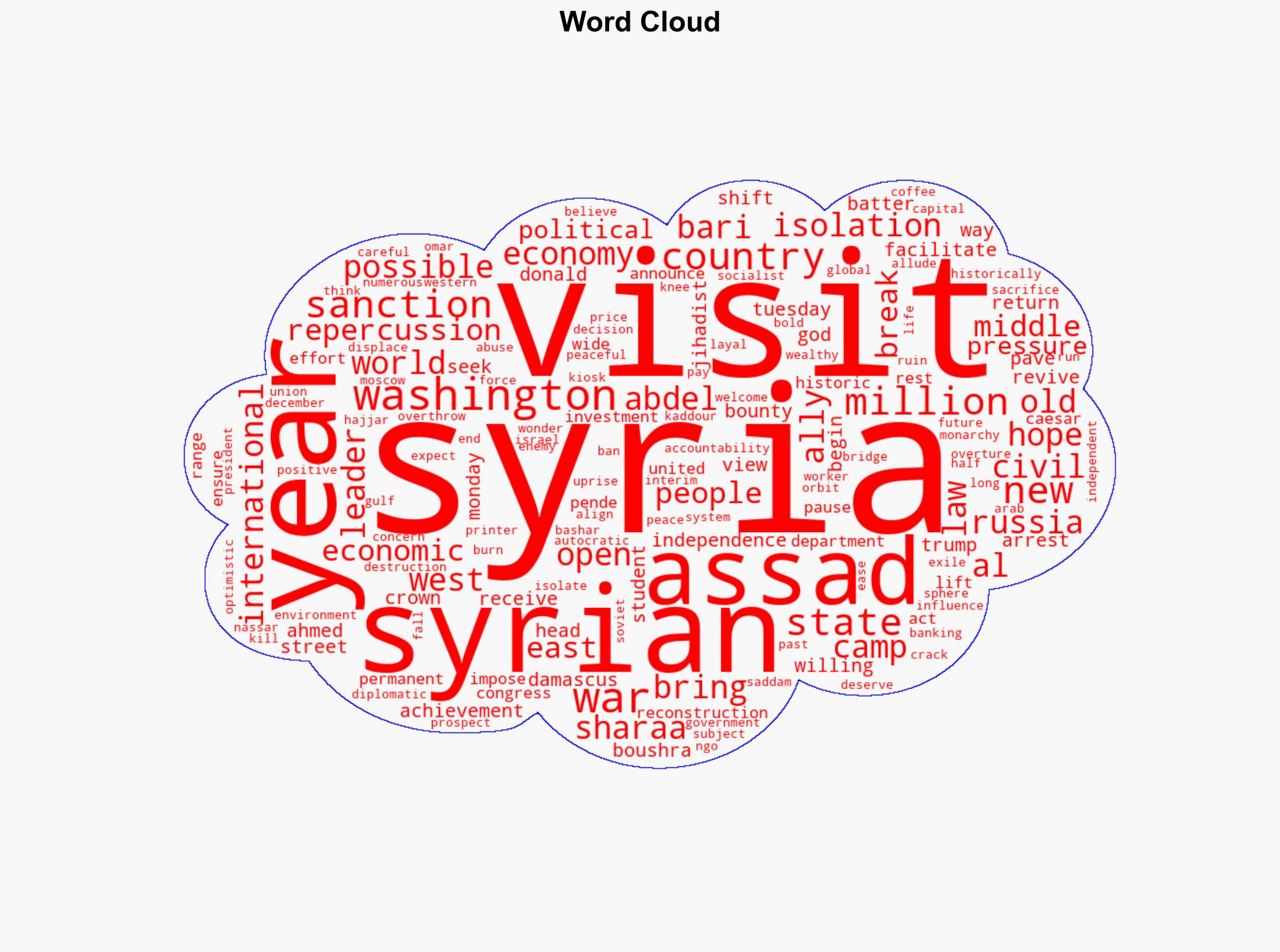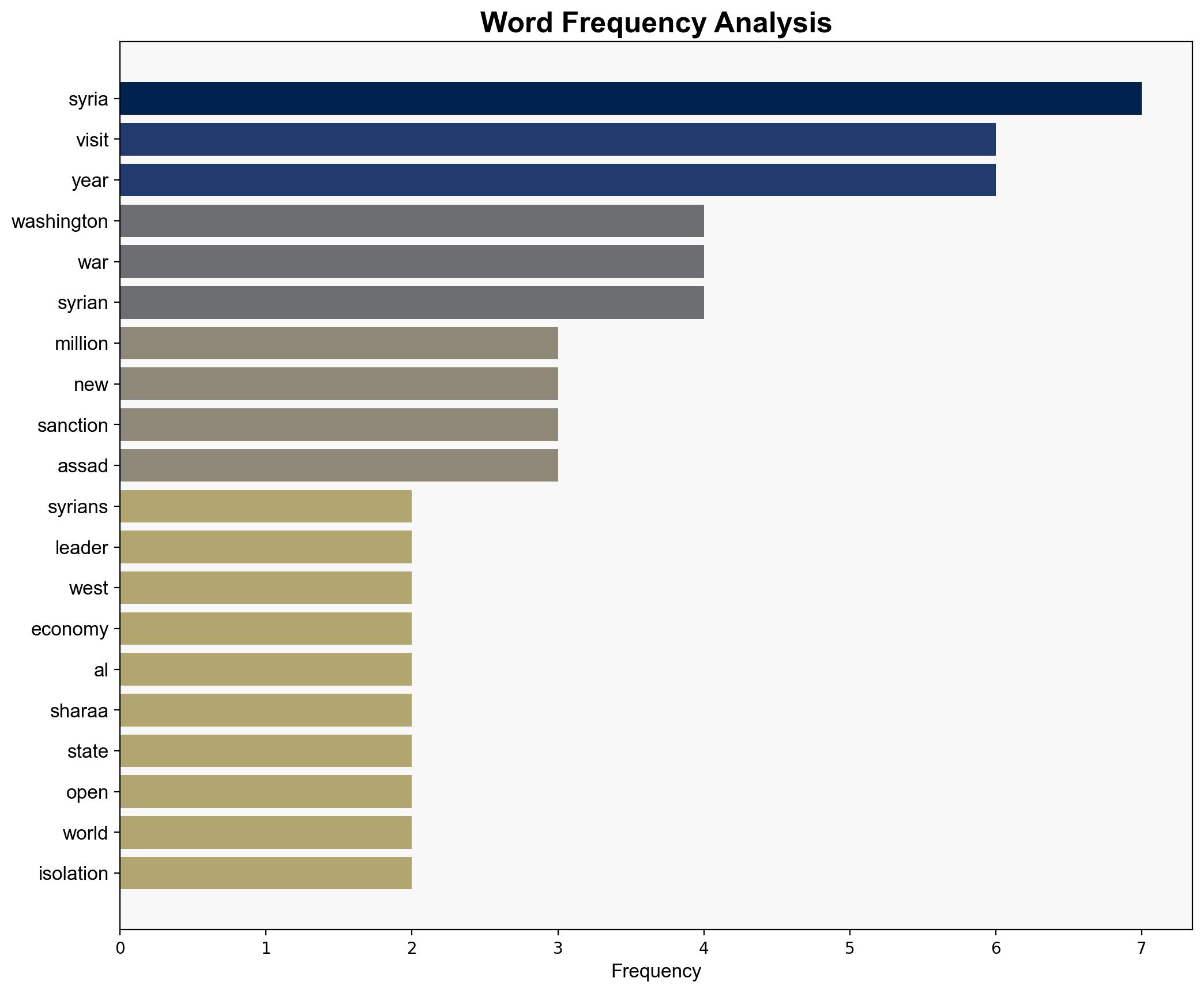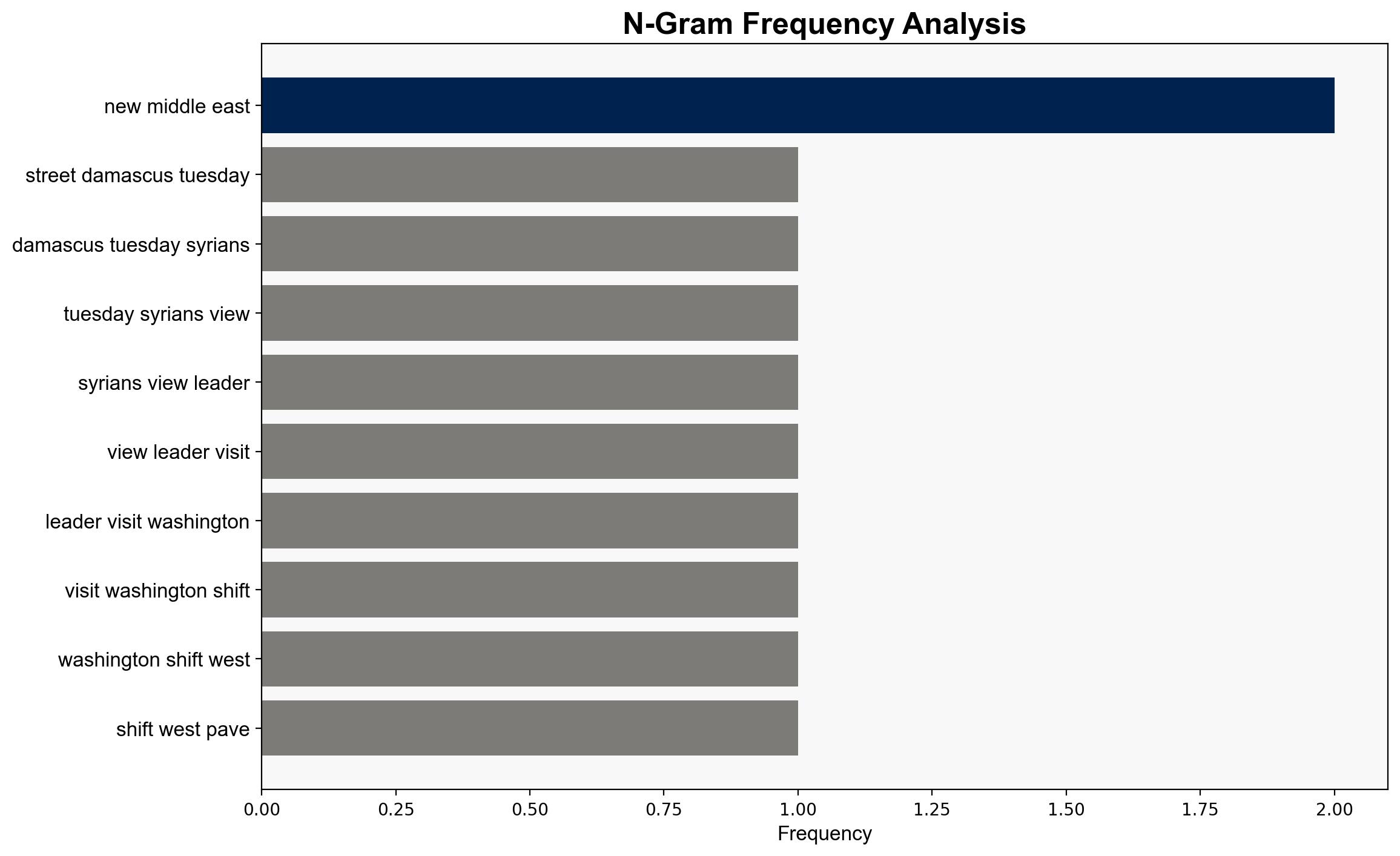For many Syrians Sharaas US visit marks new beginning – Digital Journal
Published on: 2025-11-11
AI-powered OSINT brief from verified open sources. Automated NLP signal extraction with human verification. See our Methodology and Why WorldWideWatchers.
Intelligence Report: For many Syrians Sharaas US visit marks new beginning – Digital Journal
1. BLUF (Bottom Line Up Front)
The visit of Syrian leader Ahmed al Sharaa to the United States represents a potential strategic pivot for Syria towards the West, possibly leading to economic revitalization and geopolitical realignment. However, this shift is fraught with uncertainties, including the durability of US-Syrian relations and the reaction of Russia. With a moderate confidence level, the hypothesis that Syria is seeking to diversify its international alliances and reduce its reliance on Russia is most supported. Recommended actions include monitoring US-Syrian diplomatic engagements and assessing regional reactions, particularly from Russia and Gulf states.
2. Competing Hypotheses
Hypothesis 1: Syria is strategically realigning towards the West to revitalize its economy and reduce dependency on Russia. This hypothesis is supported by the visit to Washington, potential easing of sanctions, and historical context of Syria’s economic struggles.
Hypothesis 2: The visit is a tactical maneuver by Syria to gain short-term economic relief without a genuine shift in alliances. This is supported by Syria’s historical ties with Russia and the potential for this visit to be a temporary diplomatic gesture.
Hypothesis 1 is more likely due to the significant economic incentives and the potential for long-term benefits from Western engagement, despite the risks of alienating Russia.
3. Key Assumptions and Red Flags
Assumptions include the belief that the US is willing to engage with Syria beyond short-term economic incentives and that Syria is prepared to make concessions to the West. Red flags include the possibility of Russia perceiving this shift as a betrayal, leading to geopolitical tensions, and the risk of internal Syrian factions opposing this realignment.
4. Implications and Strategic Risks
The primary implications include potential economic revitalization for Syria if sanctions are lifted and increased political stability if Western engagement is sustained. Strategic risks involve the possibility of Russian retaliation, either through direct political pressure on Syria or by leveraging its influence in the region to counteract US interests. Additionally, there is a risk of domestic backlash within Syria if the population perceives the government as capitulating to Western demands.
5. Recommendations and Outlook
- Monitor US-Syrian diplomatic developments closely to assess the depth of engagement and potential policy shifts.
- Engage with regional allies to gauge their reactions and potential shifts in alliances.
- Best-case scenario: Syria successfully integrates into the global economy with Western support, leading to regional stability.
- Worst-case scenario: Russia retaliates, destabilizing the region and exacerbating Syrian economic woes.
- Most-likely scenario: Incremental improvements in US-Syrian relations with cautious engagement from both sides.
6. Key Individuals and Entities
Ahmed al Sharaa – Syrian leader visiting the US.
Donald Trump – Former US President involved in receiving Sharaa.
Boushra Abdel Bari – Syrian law student expressing hope for reconstruction.
Omar Nassar – Syrian printer welcoming Western engagement.
Saddam Hajjar – Syrian coffee kiosk owner optimistic about the future.
Layal Kaddour – Syrian NGO worker concerned about international pressure.
7. Thematic Tags
Regional Focus: Middle East, US-Syria Relations, Geopolitical Realignment, Economic Sanctions
Structured Analytic Techniques Applied
- Causal Layered Analysis (CLA): Analyze events across surface happenings, systems, worldviews, and myths.
- Cross-Impact Simulation: Model ripple effects across neighboring states, conflicts, or economic dependencies.
- Scenario Generation: Explore divergent futures under varying assumptions to identify plausible paths.
- Narrative Pattern Analysis: Deconstruct and track propaganda or influence narratives.
Explore more:
Regional Focus Briefs ·
Daily Summary ·
Methodology





